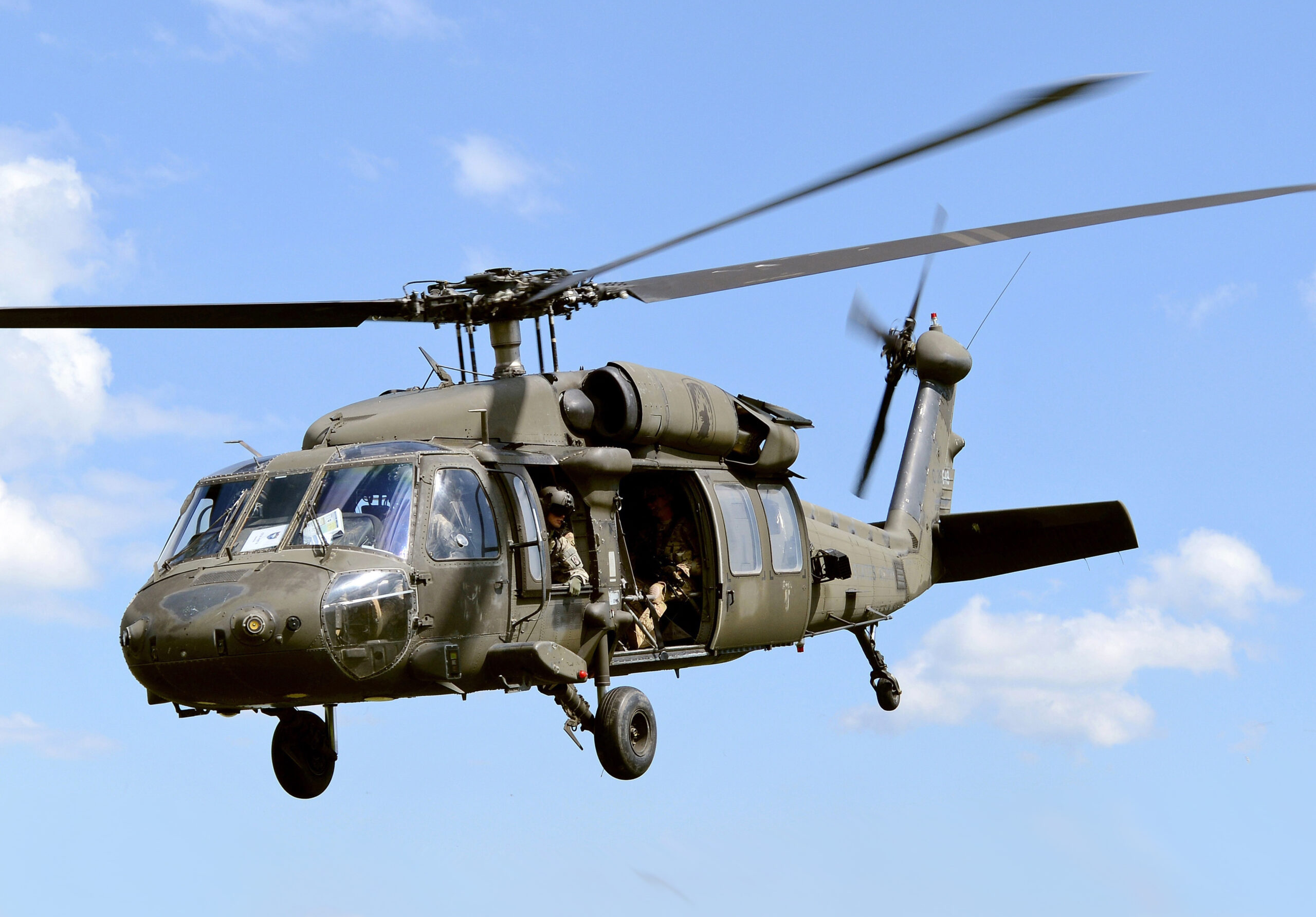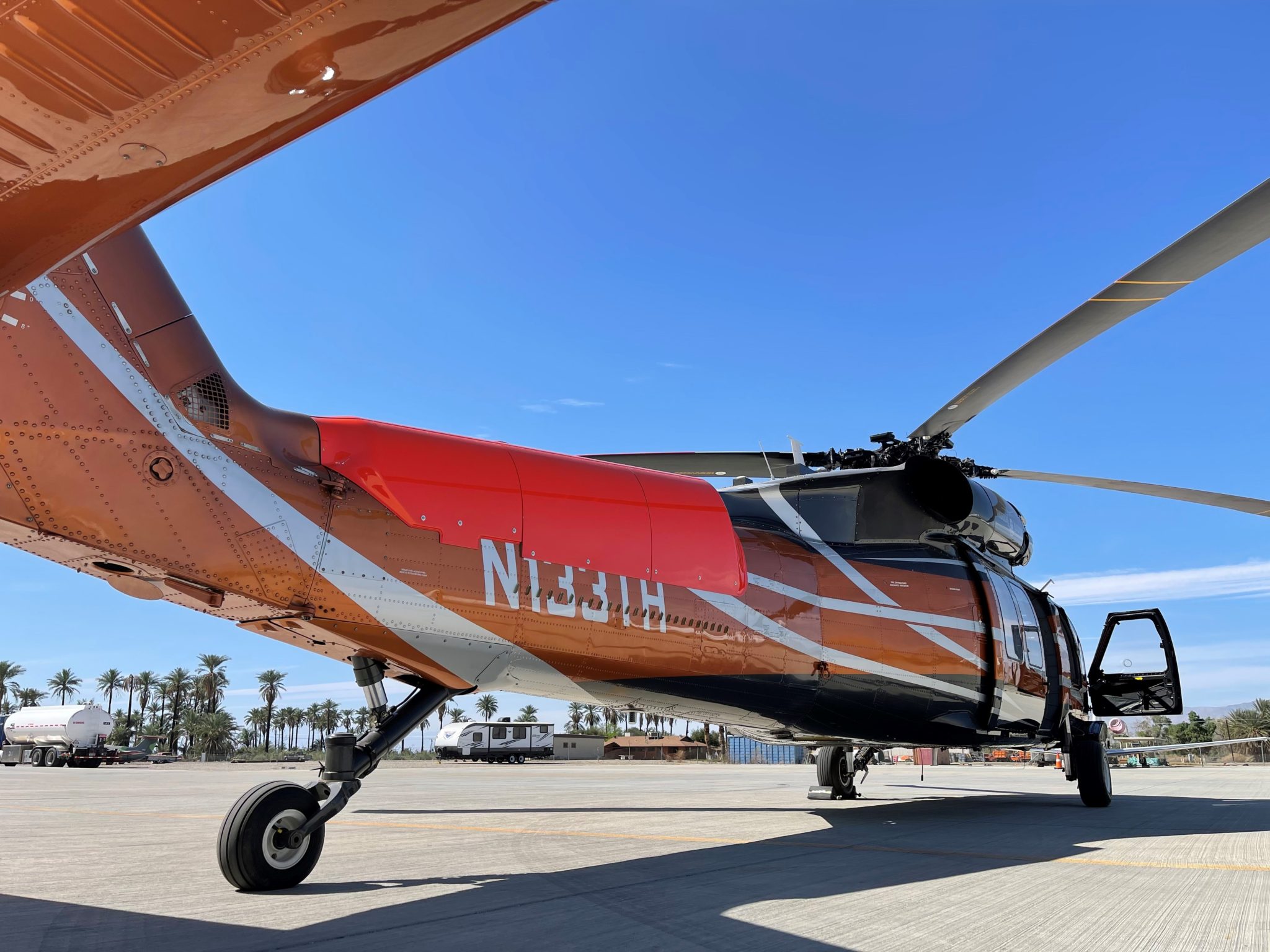The UH 60 Black Hawk: Versatility and Performance in Military Aviation
The UH 60 Black Hawk: Versatility and Performance in Military Aviation
Blog Article
Just How the UH 60 Helicopter Revolutionized Modern Aviation
The UH-60 helicopter stands for a critical development in rotorcraft style, identified by its integration of innovative modern technologies that have actually fundamentally changed both army and private aviation landscapes. With functions such as fly-by-wire controls and modular building and construction, the UH-60 has not only boosted operational performance yet has also expanded the extent of helicopter applications. Its exceptional versatility throughout varied settings elevates questions about its lasting effect on future rotorcraft technologies. As we discover these measurements, the implications for air travel's development become increasingly appealing.
Historical Background of the UH-60

The Black Hawk was engineered to operate in varied environments and do a wide variety of goals, consisting of army transport, clinical discharge, and logistical support. Its advancement was noted by a concentrate on improving speed, survivability, and convenience, includes that have made it a mainstay in military air travel. The helicopter's layout incorporates advanced materials and systems that add to its functional effectiveness and versatility.

Key Technological Innovations
Key technical innovations have substantially enhanced the abilities of the UH-60 Black Hawk helicopter, guaranteeing its ongoing importance in modern air travel. Among the most remarkable advancements is its innovative avionics suite, which consists of electronic displays and incorporated trip administration systems. These systems enhance situational recognition, navigating accuracy, and total functional efficiency.
In addition, the helicopter features enhanced rotor blades designed for enhanced lift and decreased noise degrees. The composite materials used in these blades add to better efficiency in diverse weather condition problems. The consolidation of fly-by-wire controls has additionally transformed flight handling, permitting better responsiveness and security throughout complicated maneuvers.
The UH-60's engine technologies, specifically the Honeywell T700-GE-701C, provide increased power outcome and gas effectiveness, which extends operational variety and decreases logistical worries. The installment of sophisticated communication systems allows smooth sychronisation amongst systems, assisting in real-time details sharing.
Last but not least, the intro of modular style ideas has actually simplified maintenance and upgrade procedures, making sure that the Black Hawk stays adaptable to advancing mission needs. uh 60. Collectively, these innovations have strengthened the UH-60's standing as a crucial possession in both armed forces and private operations

Military Applications and Effect
Army applications of the UH-60 Black Hawk helicopter are diverse and considerable, making it a crucial possession for modern-day armed pressures. Made for adaptability, the Black Hawk succeeds in army transportation, clinical emptying, logistics support, and combat procedures, substantially enhancing operational abilities on the battleground.
The helicopter's capacity to run in varied atmospheres, consisting of urban and mountainous surfaces, enables fast release and dexterous maneuverability. Its innovative avionics and communication systems help with coordinated missions, allowing forces to conduct complicated procedures with increased situational awareness. The Black Hawk's toughness and versatility have made it a preferred option for special procedures, where stealth and accuracy are paramount.
Moreover, the helicopter's ability to carry out under negative climate condition guarantees that army operations can proceed continuous. Its duty in humanitarian assistance and catastrophe alleviation additionally emphasizes its importance, as it can swiftly provide aid and assistance in crisis scenarios.

Noncombatant Use and Adaptations
While the UH-60 Black Hawk is mostly identified for its armed forces prowess, its adaptability has additionally led the method for considerable civilian applications. Throughout the years, the helicopter has been adjusted for different duties, including emergency medical solutions (EMS), search, rescue and firefighting procedures, and legislation enforcement. Its robust layout and progressed avionics make it a suitable platform for these critical missions.
In the realm of EMS, the Black Hawk's large interior enables the quick transportation of patients and clinical employees, substantially improving feedback times in emergencies. Firefighting adaptations enable the helicopter to lug water pails or fire retardants, making it an important asset during wildfires. In addition, police have actually utilized changed Black Hawks for security and tactical operations, leveraging their capacities for urban policing and counter-narcotics initiatives.
In addition, the versatility of the UH-60 has triggered rate of interest in civilian markets, bring about its usage in corporate look at these guys transportation and tourism. The helicopter's efficiency, flexibility, and dependability remain to affect its advancement, making sure that it remains a vital asset in various sectors past its initial armed forces intent.
Future of Rotorcraft Air Travel
As innovations in technology remain to reshape the landscape of aeronautics, the future of rotorcraft aviation appears dynamic and encouraging. Technologies in products, propulsion systems, and automation are driving the evolution of rotorcraft, enhancing their performance, performance, and safety. Light-weight composite products are enabling the style of helicopters that are not just a lot more additionally qualified however fuel-efficient of bring much heavier hauls.
Electric and hybrid propulsion systems are obtaining traction, reducing reliance on standard nonrenewable fuel sources and Visit Website reducing the environmental effect of rotorcraft procedures. These technologies guarantee to prolong trip range while decreasing functional prices, making rotorcraft extra attractive for both military and private applications.
Additionally, the assimilation of sophisticated avionics and independent systems is leading the way for extra sophisticated rotorcraft. Improved situational understanding, automated flight controls, and possibility for unmanned airborne vehicle (UAV) operations will certainly redefine goal capabilities.
Verdict
The UH-60 helicopter has actually essentially transformed both army and noncombatant air travel with its innovative modern technologies and flexible applications. Its advanced fly-by-wire systems, boosted avionics, and modular style have set new requirements for rotorcraft, allowing adaptability throughout different goals and settings. uh 60. The enduring influence of the UH-60 remains to motivate innovations in materials, propulsion, and automation, guaranteeing its tradition as a crucial force in the advancement of air travel that will form future rotorcraft growths
The UH-60 helicopter stands for a critical innovation in rotorcraft design, defined by its integration of innovative modern technologies that have actually basically modified both noncombatant and armed forces air travel landscapes. With features such as fly-by-wire controls and modular construction, the UH-60 has not only boosted functional performance but has actually also expanded the extent of helicopter applications.The UH-60 Black Hawk helicopter, developed by Sikorsky Aircraft, has played a pivotal function this content in modern air travel because its introduction in the late 1970s.Trick technological developments have actually considerably boosted the abilities of the UH-60 Black Hawk helicopter, ensuring its continued relevance in contemporary aviation.The UH-60 helicopter has fundamentally transformed both noncombatant and armed forces aviation through its innovative technologies and functional applications.
Report this page